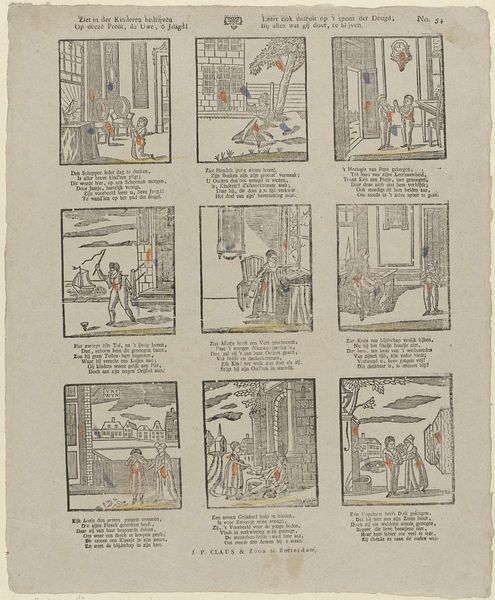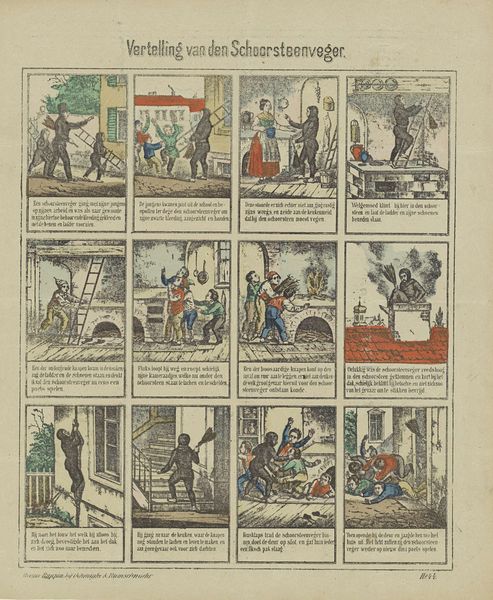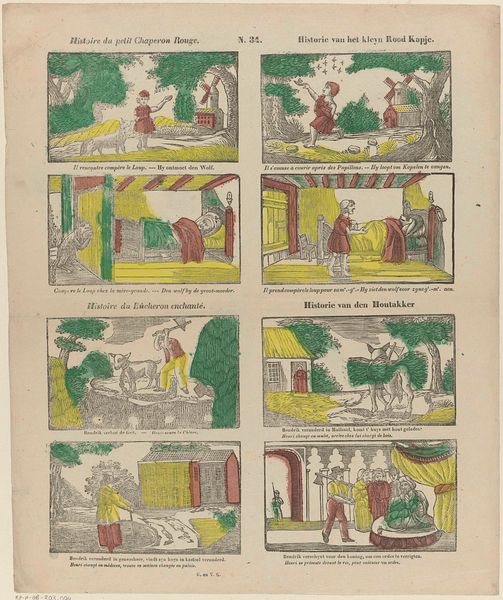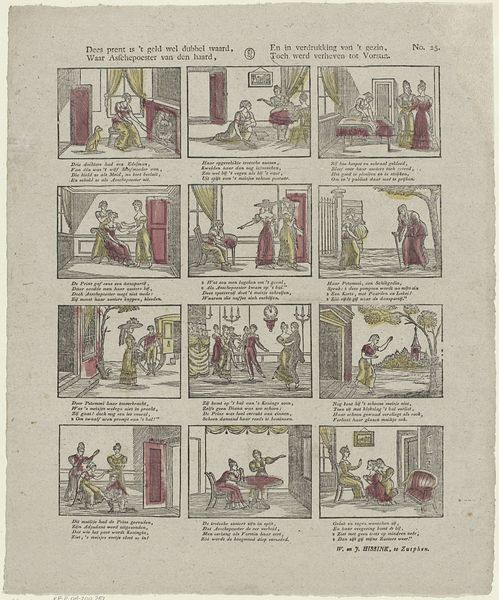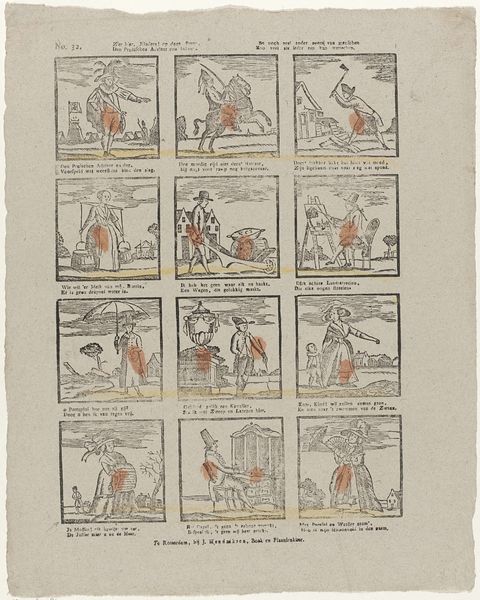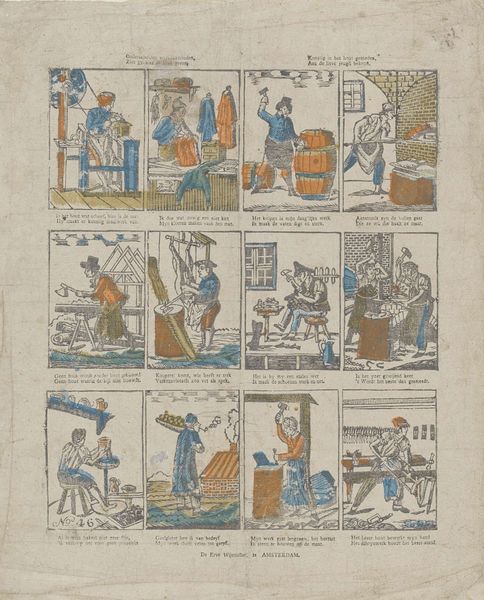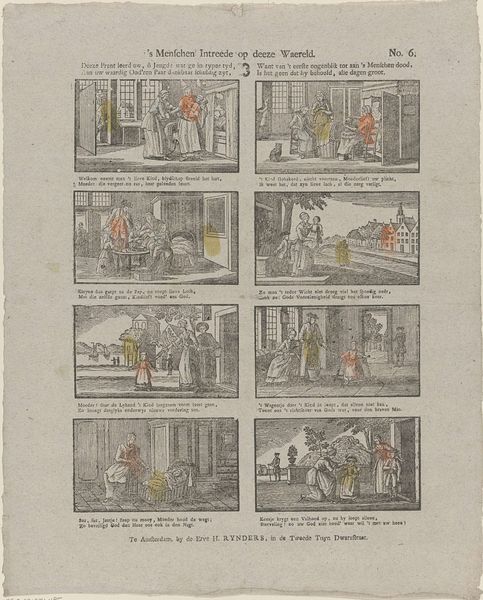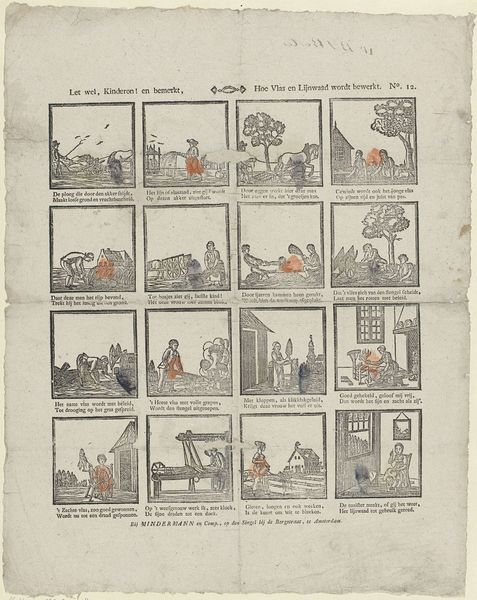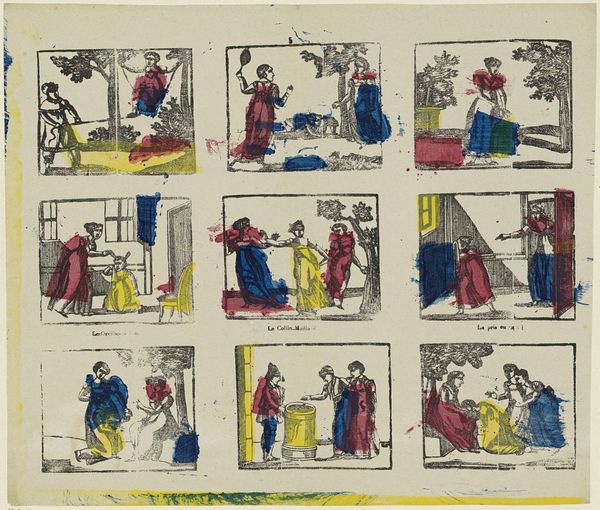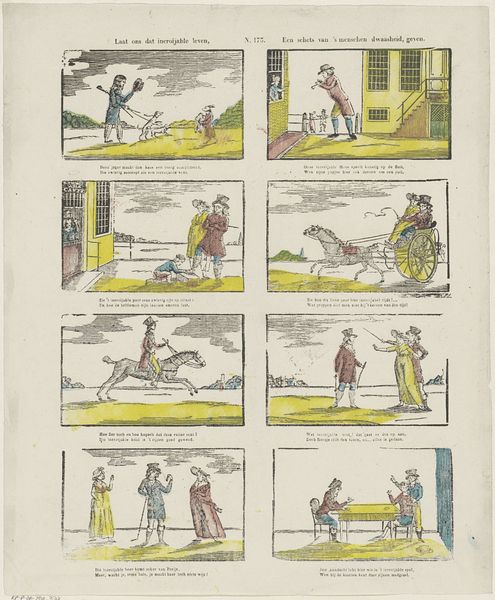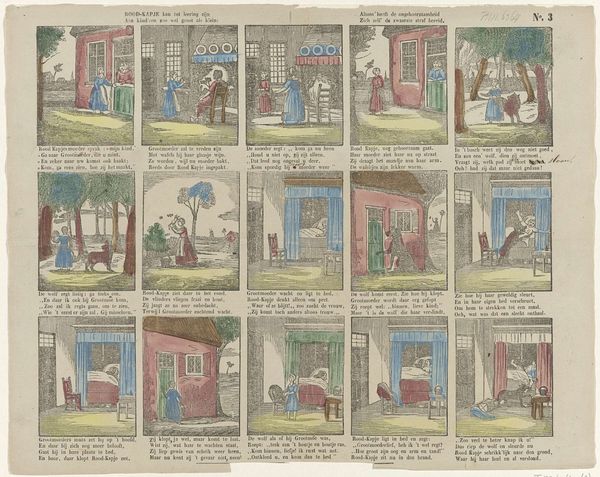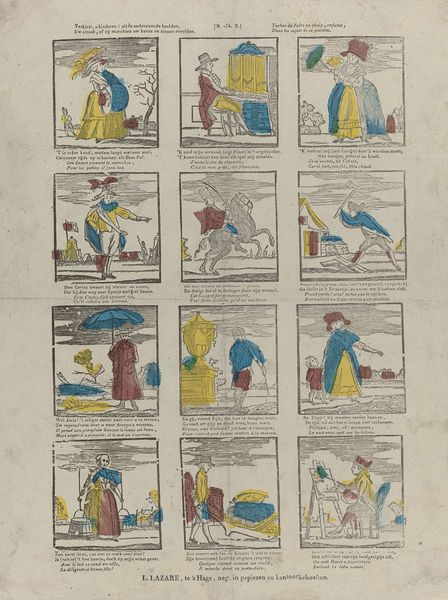![´T onschuldige vermaak der kindren, / Is aangenaam en kan niet hindren [(...)] by Philippus Jacobus Brepols](/_next/image?url=https%3A%2F%2Fd2w8kbdekdi1gv.cloudfront.net%2FeyJidWNrZXQiOiAiYXJ0ZXJhLWltYWdlcy1idWNrZXQiLCAia2V5IjogImFydHdvcmtzL2U3ZmQ4NzlhLTc0MGQtNGNiNS04NzliLTA0OTBmMTdjNmZmZC9lN2ZkODc5YS03NDBkLTRjYjUtODc5Yi0wNDkwZjE3YzZmZmRfZnVsbC5qcGciLCAiZWRpdHMiOiB7InJlc2l6ZSI6IHsid2lkdGgiOiAxOTIwLCAiaGVpZ2h0IjogMTkyMCwgImZpdCI6ICJpbnNpZGUifX19&w=3840&q=75)
´T onschuldige vermaak der kindren, / Is aangenaam en kan niet hindren [(...)] 1800 - 1833
0:00
0:00
philippusjacobusbrepols
Rijksmuseum
#
comic strip sketch
#
aged paper
#
toned paper
#
quirky sketch
# print
#
sketch book
#
personal sketchbook
#
sketchwork
#
folk-art
#
comic
#
sketchbook drawing
#
genre-painting
#
history-painting
#
storyboard and sketchbook work
#
sketchbook art
Dimensions: height 411 mm, width 334 mm
Copyright: Rijks Museum: Open Domain
Editor: Here we have a print from the early 19th century, sometime between 1800 and 1833, by Philippus Jacobus Brepols, titled "\`T onschuldige vermaak der kindren, / Is aangenaam en kan niet hindren [(...)]". It's at the Rijksmuseum now. It looks like a page from a children’s book, or a collection of short illustrated stories. What historical narratives do you think it evokes? Curator: This print, depicting children's games, isn't simply a quaint depiction of childhood innocence; it reflects broader social and political currents of the time. Consider the burgeoning Enlightenment ideals and the increasing focus on childhood as a distinct phase of development, influencing pedagogical approaches. Do you notice anything in the imagery that may speak to class dynamics or gender roles? Editor: I see children playing different games, some inside and some outside. In one, a child is dressed as a ghost, maybe a reference to popular theater or folk tales? Curator: Exactly. These aren't isolated scenes, but a reflection of the societal expectations placed on children of different genders and classes. The ghost could allude to anxieties surrounding death and morality prevalent in religious teachings, or even be an early commentary on social anxieties manifested through folk tales, using costume as a means of exploring othering. Who is allowed to be playful and carefree? Who is already being shaped by societal constraints? Editor: That makes me wonder about how childhood was being defined and controlled at that time. Thanks, I wouldn't have thought about that without you pointing it out. Curator: Looking at art through a critical lens allows us to challenge traditional interpretations and understand how power operates within cultural production. It's about connecting the historical to the contemporary. Editor: Absolutely, this really enriches the way I’ll engage with artworks from now on.
Comments
No comments
Be the first to comment and join the conversation on the ultimate creative platform.
